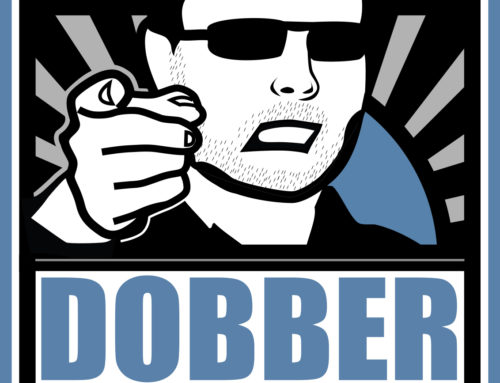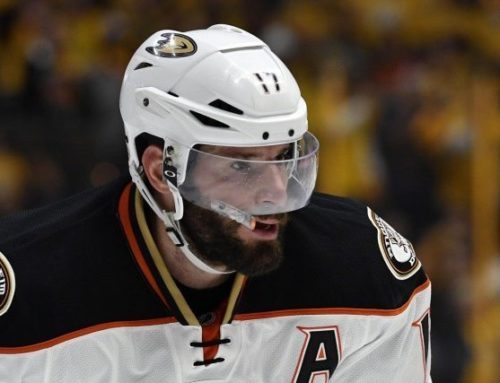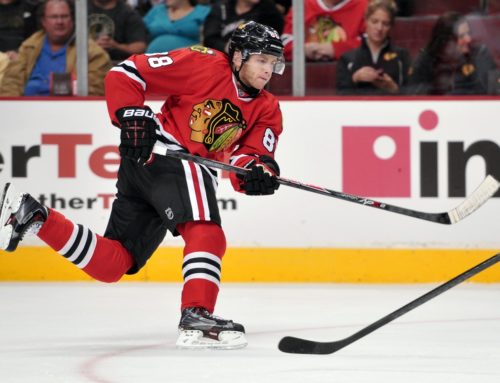Drew’s Guide to Drafting
Dobber Sports
2008-08-14

The Reason
Drafting is among one of the most important parts of fantasy sports. You can make smart daily or weekly lineup decisions, but it won't mean anything if you don't have good players. You can make smart trades for good players, but that will be nearly impossible if you have nothing of value to offer. The foundation of a fantasy team is built at the draft table, and putting in a little effort and planning ahead of time can launch you ahead of your competition.
The Materials
To draft effectively, you're going to need a few things. I'd advise some kind of spreadsheet program. Microsoft Excel is available on most computers, but if you don't have Microsoft Office you can use OpenOffice. It's a free equivalent that will allow you to save into formats compatible with Excel. Another option is GoogleDocs, which is an Excel-type program you can use through your internet browser, and access your files anywhere.
You'll also need a good drafting guide. Plenty of hockey websites release guides with point predictions, notes, and insights on teams and prospects. I would highly advise Darryl Dobbs' package available at DobberHockey.com. He provides great insight and is eerily accurate at times.
Of course, you're going to need a list of available players in your draft. If you're drafting for the first time in your league, make sure the rules are clear on drafting players that haven't been NHL-drafted yet. Otherwise, make sure you have a list of which players aren't being protected by your opponents and are up for grabs.
The Gameplan
Before you so much as open up a spreadsheet, there are a few things you MUST do first. You need a gameplan: you must determine what your team's needs are and what resources are available to fulfill them. My strategy has always been to enumerate my needs, see which players can address each need, and then evaluate all of the players to find out where they should — and might — be drafted. These three steps should help you to a successful draft.
The Philosophy
If you follow these three steps, you're going to have a lot of information about your team and your options. You will have lists of priorities – you may find your top need is a goal-scoring left-winger who's a good bargain for the salary. Maybe salary isn't an issue and you're making a push for the championship this year – a veteran netminder like Martin Brodeur might give you the numbers you need for the year, and can be released later.
The idea is to have you create an image of what you need for your team. At the draft table, you're almost always presented with multiple options that seem equally appealing. When “all else is equal”, that is when you can't distinguish one player's value from another, you'll have your philosophy to fall back on.
The Guide
I. Enumerate your needs
1. Positions
I'm not going to argue against the philosophy that you should draft the best player available (BPA). If you need a goalie, and are presented with the option of drafting a Chris Osgood or an Ilya Kovalchuk, you need to take the superstar. That being said, it's important to keep in mind the importance of positions in hockey pools. High-scoring left wingers are difficult to find, compared to centers or right wings. Depending on your pool's rules for positions, you need to learn where your holes are and all else equal, draft to fill those positional needs. Some pools may heavily reward goalie performance, in which case you should make 2 top-flight goalies a high priority. Likewise, for leagues that don't address defenseman scoring specifically, you may get away with neglecting the blueline to beef up your forwards. Look at what positions are weakest and fill them accordingly.
What to do:
Prioritize your positional needs. I always write a list of what positions I need to fill in what order. That way, all things being equal, I know which areas to plug up.
2. Stats
This is an important aspect of any league. Head to head, roto, and straight points leagues all reward different stats. If you find yourself losing out in the goal category, it should be obvious that you need goalscorers. Even in straight points leagues, pay attention to which stats are rewarded more generously than others. My league gives 15 points for a goal and 12 points for an assist, so I make it a point to get goalscorers over playmakers if both players have the same upside otherwise.
What to do:
This is a self-explanatory need. If you find that you have huge deficiencies in any category, prioritize a list. Once again as you're drafting, pay attention to your stats needs when considering which players to draft.
3. Timeline
This is arguably the most crucial need for you to understand. If you ask people on message boards which player to take, or who wins in a trade, one of the first questions you'll likely be asked is, “When do you plan on winning?”
Don't fret – some teams' value lies primarily in the future of their players. If you're in rebuilding mode, you can draft a guy with higher upside that may be a year or two further away. Likewise, if your team has a good chance of winning the league this year, then you can get a good steal on some veterans.
What to do:
It's important to objectively evaluate your team and come up with a mindset. If you're making a push for the championships, then know that you can get away with drafting older guys that you won't necessarily keep. If you're clearly not going to win this year, take young guys with high upside that might not produce as much right away.
If you're about to participate in your league's first draft, then a smart philosophy is to build a team around a young core of guys that can get you to the playoffs now, and will only further blossom into superstars. Young guys that can produce 70-80 points now with a higher ceiling make for a great keeper league core, but don't forget to sprinkle in prospects and veterans that can produce now.
4. Keeper Rules
Understand the rules of your league regarding keepers. If you're only allowed to keep 3 players every season, then it's hard to stock up on young talent because you're going to have to cut most of your players loose before they truly develop. If salary is an issue, understand where you stand in regards to the cap. You may have to draft a lower quality player, or one that doesn't fit your team's direction if you can't afford someone that's a better match for your squad.
What to do:
Just like your timeline, develop a team philosophy that you can apply to ALL of your choices. If your league is salary-based, earmark a certain amount of money for your needs. You will inevitably have to adjust as the draft goes by, but knowing that you expect to spend $6 million on a superstar forward, $3 million on a goalie, etc. will help you plan better. If your league does keepers based on a flat number, then plan out your keepers BEFORE you draft, then fill out the holes.
II. Which players address which need?
Now that you've got your needs listed, start perusing your list of available players. You've got priorities lined up: you need assists, you may need defensemen, you may need younger talent. Go shopping!
1. The past
This is the most boring part of drafting. There are a few ways to compile statistics from the past season, but the concept is basically the same: find a way to list all of your available players' production from the last year in your spreadsheet program. This will allow you to sort and compute based on players' production. I would advise adding all NHL stats you can get – goals, assists, +/-, games played, shots on goal, etc. Even if your league doesn't count them, they paint a better picture of each player.
This will allow you to quickly examine your options for each need. Need a center? Sort your table by position, then perhaps goals or overall points. That leaves you a list of centermen sorted by offensive production. This will also allow you to look at players by age, number of games played (a good indicator of durability), salary, etc. You can even get fancy and compute an overall production index if your league assigns point values to each stat category.
2. The present
Since all drafts take place during the offseason, keep tabs on what's happening in the league. If your playmaking center on a bottom-dweller gets traded to a contender, you better be aware of it. If you're not sure how a trade or signing affects a player's value, don't assume or ignore it.
There are plenty of great websites out there with fantasy hockey junkies that would love to add their opinions. Doing research on a few players can really produce results. Two heads are better than one, and while a player might have raw talent you may be forgetting about his new team's defensive system, or conflicts he has with a new coach.
3. The future
Predictions should always be taken with a grain of salt. They can still provide great insight on what to expect from a player in the upcoming season and beyond. Always try to determine when a player has reached his peak, when he is declining, or when he still has room to improve. The guides you purchase will hopefully give you a good picture of what to expect from a player and when to expect it. Factor this in with your timeline needs, and you should have a good picture of how much your youngsters and veterans should produce in the upcoming season(s).
III. Evaluate, evaluate, evaluate
1. You
You now have a list of things that you need, and a list of available players that can address these needs. Up until this point, your work has been pretty objective – Alex Ovechkin scored the most goals in the 2007-2008 season. Evgeni Malkin was the highest-scoring center. Now is your chance to show a little creativity – and potentially screw up.
Let's say you need a young centerman who you hope to build your team around in the future, but can't afford someone of Sidney Crosby's stature. Your options are endless: Ryan Getzlaf, Nicklas Backstrom, Zach Parise, Eric Staal. You've looked at their historical production, and their upsides may be equivalent with varying timelines. Now is when you need to prioritize your draft list.
Parise's got talent, but plays on a defensive-minded New Jersey team that is usually starving for offense. Staal has had a 100-point season, but has also bounced around with 70 points. Backstrom has huge upside and a chance to feed goal-machine Alex Ovechkin for years, but still has some rough corners to polish off as a youngster.
You must find a way to rank these guys. Use your personal judgment. If in doubt, ask around on the message boards. Read fantasy rankings on websites like DobberHockey.com and TheHockeyNews.com. Most importantly, listen to your gut. If you feel like a player is too injury prone, or just plain don't like one, don't rule those out.
Finally, don't be afraid to mingle your lists. You might value your top choice for a starting goalie over your #5 choice for a starting centerman. This is your chance to be subjective. Planning makes for a good team, talented prioritizing makes for a great one.
2. Them
Fantasy hockey would be boring if it were just you. Luckily, you've got plenty of other teams competing with you. Drafting is like capitalism – market value rules. You may have to change your plans and pick up a goalie early if your poolies go nuts and take 15 goalies in the first 20 picks.
Like capitalism, respect supply and demand. Buy low on a player that you think merely had an off-season and will bounce back. When drafting you don't get an opportunity to sell, but you can really get a steal if a guy had an injury that hampered his numbers or was on a dismal team. If you know someone is a big homer, feel free to draft talented players from his team. I've traded away Kris Letang for Martin St. Louis because the other poolie was a huge Penguins fan. Just don't draft someone for that reason if you can't stomach the idea of having them on your team full-time!
3. Sleepers
You hear people talk about good “sleeper picks” or “dark horses”. There are some guys that are poised and ready to explode with production. Whether they're finally getting their big shot, have been moved to a new team that's a better fit, or are simply progressing to the point that they are a real asset, keep an eye out for these guys – Alexander Radulov is a great name to drop in this section.
Don't forget the two extremes either. Some guys are way too young and fly under the radar, and some guys are way too old. In 2007 I drafted Mats Sundin with the #205 pick, because nobody wanted an “old guy”. You can steal up young guys like Tobias Enstrom who are probably undervalued by the average poolie because their names have only recently been tossed around.
The Draft Table
So you've got your draft list set up. Your ultimate lists of who you want, when you want them, and when you think people will take them. Where do you go from here?
Preparation
You must prepare adequately to know your team. If you followed this guide so far, you've done more than enough of this. You're probably very far ahead of your competition, and know the ins and outs of the team that you're building.
Adaptation
This is the most important part of the draft. As people make selections, values change. You can easily run out of goalies or defensemen. Pay attention to people's tendencies – do they tend to draft young guys? Are they going defense/goalie first? Pay attention to people's needs – if the guy ahead of you is stacked at center, you might be able to bank on getting one of the top pivots left.
When guys slip in the draft, know when to grab them. In the draft where I got Sundin in the 17th round, Alfredsson fell to the 5th, and Brind'Amour to the 10th. At one point, we all knew that they were steals, but allowed them to fall further because we got greedy or had other plans. When Sundin started out hot, people regretted not grabbing him in the 16th round – when he was still just as much of a steal.
Obfuscation
Keep your priorities private. The draft is a time when people will snipe players you like or need. If you've got an extra spot and the poolie below you is as shallow in net as the free agent pool, you should pick up a goalie and hope to trade him later, making him pay a higher price. Expect people to do the same to you. If you make it clear that you're shopping for a player of a certain mold or position, don't expect to get it.
You worked hard to devise your draft plan. Don't go hyping up your sleeper picks until you've drafted them. If someone else drafts them, don't go “aw shucks” and make your discontent public – the other GM may undervalue the player and for all you know your sleeper could be available for a song.
The Conclusion
Your average GM will probably print out a list of players sorted by last year's scoring totals, and scratch off players as they're drafted. Your approach will be based on what you need, where you need it, and when you'll get it. As with all fantasy sports, you leave a lot to chance – but with well-planned priorities your team will have an identity that makes you stronger at the table and stronger throughout the season.





 PHI
PHI WSH
WSH FLA
FLA MIN
MIN N.J
N.J T.B
T.B BUF
BUF DAL
DAL MTL
MTL NYR
NYR CBJ
CBJ TOR
TOR NYI
NYI DET
DET STL
STL WPG
WPG CHI
CHI VAN
VAN SEA
SEA COL
COL NSH
NSH BOS
BOS EDM
EDM CAR
CAR UTA
UTA OTT
OTT CGY
CGY PIT
PIT ANA
ANA S.J
S.J VGK
VGK L.A
L.A
